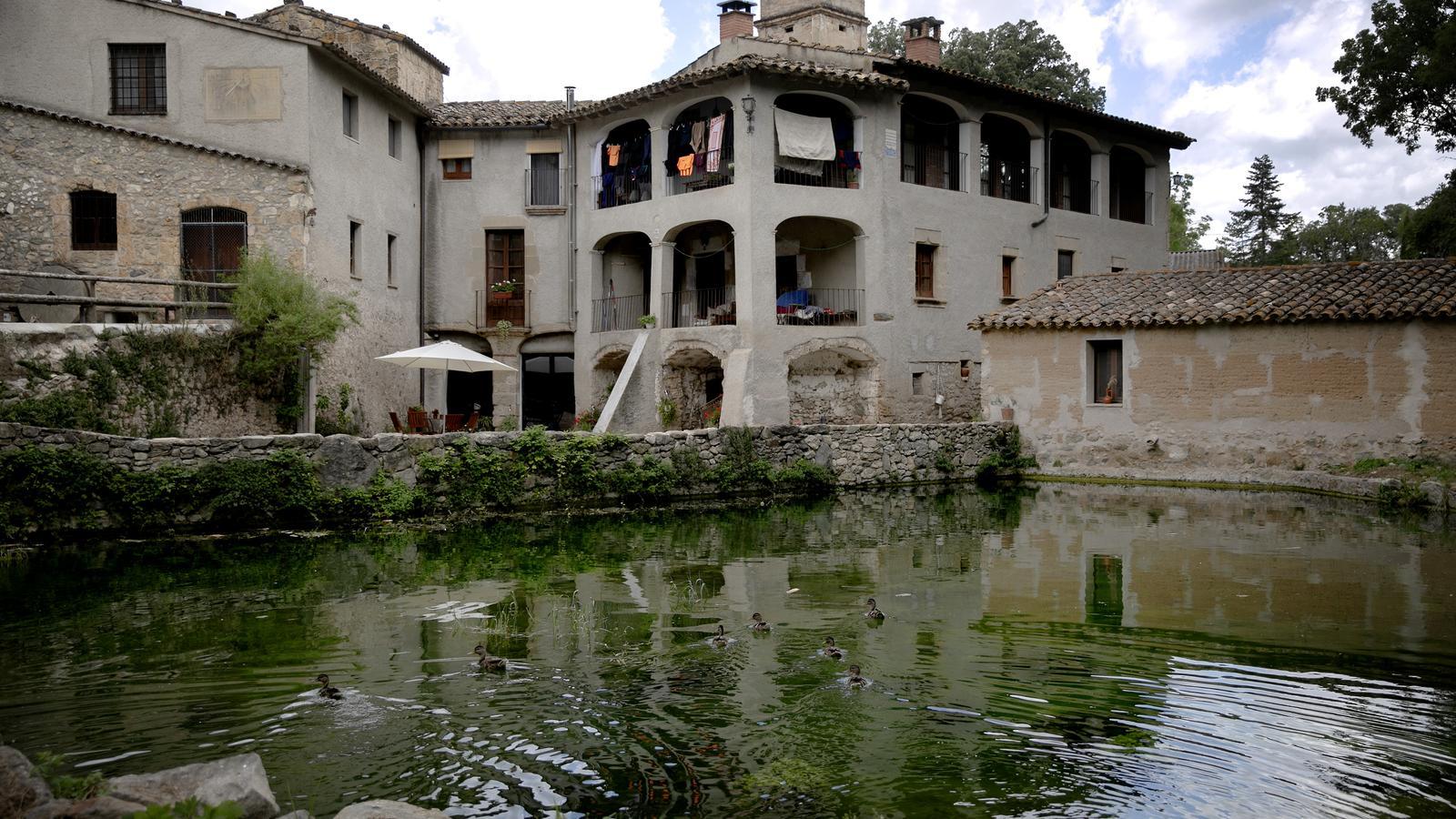The Molino de la Llavina began as a flour mill. Water came from the upper reservoir. In the second half of the 17th century, the family decided that where there was one mill, there could be two. And if one mill was dedicated to grinding grain, the second could be a rag mill. They also tried to make a business out of it by marketing ferruginous water from the Font del Ferro, which is just below the house, next to the stream. The water was to be called "The Wonder of Health." But in bottles, it became cloudy. It didn't prosper.
Mill that you will grind
The Llavina mill


The Molí de la Llavina is an old manor house—dating back to 1040—located next to the Llavina stream, which flows into the Congost River in Centelles, below the Bertí cliffs, in an area of fields that will likely largely disappear due to the expansion of a residential estate. Thus, the Molino de la Llavina could be isolated from its natural surroundings.
It has a mill, of course, the Molino de la Llavina. It still has all its parts, but unfortunately, it hasn't been used for a few years. And it's all ready to be put back into operation. "For centuries, it milled flour for its own consumption and for many farmhouses and houses in the surrounding area. Lately, it was used for visitors, but not even that now: since the drought, it hasn't milled again," explains Anna Maria, Josep Llavina's widow. She has lived here since she was 17. Next to the "new" mill, there is even a wooden wheel—the turbine—from the old mill. "Iron was expensive, so they opted for wood, oak heartwood. It was found buried in the mud," Anna Maria tells me.
There are two ponds on this farm: one at a higher level, from which water flows—to power the mill—and the other at a lower level. The lower one dried up a few years ago. Now it's full to overflowing.
"When they are full, like now, Grandpa said there are a million liters in each pond," Martí Llavina tells me, Anna Maria's net. I should have guessed it "by eye," the way things were done in the past. But it's more than likely I was right. "Grandpa was very ingenious. He made a series of structures for water games (like a wheel with catúfols that spins with water channeled from the upper reservoir, which is still in place)." We approach with Anna Maria and Martí, followed by a bunch of cats, quite sinful. "Here! We don't give them names. These are things from the city," Anna Maria replies.
I'm surprised to see a small rowboat lying next to the lower pond. I think it's the smallest "lake" I've ever seen a boat sail on. "It hasn't been used for years," says Martí Llavina, a member of the 19th generation of the Llavinas in this rather large farmhouse. It was made for the extended family to live in. Ten people from four generations now live there, and there's plenty of room. You can stay in one area of the house and not be seen for a whole day. It still has a few beautiful rooms, with sturdy furniture, now open to visitors for those who taste the cheeses they make. Yes, for years now, the Molí de la Llavina has been "reinventing" themselves by making artisanal cheeses. Signature cheeses, they specify.
One of their specialties is blue cheese, made from raw Friesian cow's milk with an enzymatic paste and a creamy texture. It has a moist blue mushroom rind and an intense, buttery, slightly spicy flavor.
Anna Maria shows me some of the diplomas from the various cheese awards they've won. She then tells me that she has very fond memories of traveling to Hungary—except for the plane, which is a real pain, even though it flies like silk. She went several times, with her husband, Josep Llavina, to Túristvándi, a small village in Hungary, where a miller's competition was being held. They were explaining the characteristics of Catalan mills. The first time, in 2008, they won.
At the Molí de la Llavina, they've restored the pumice stone cellar. Its humidity and oxygenation make it an ideal place for maturing cheeses. If they go into this cellar, they'll be very cool. This is where the first mill stood.
